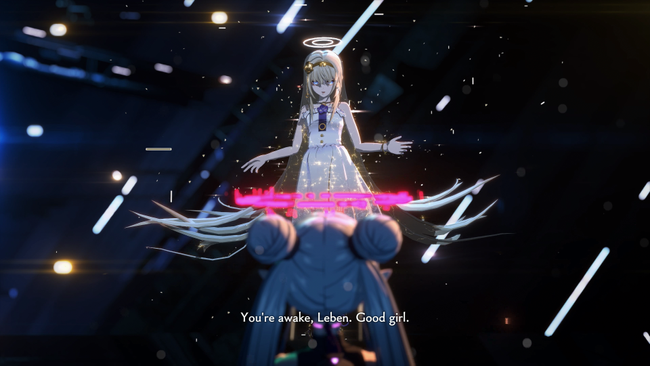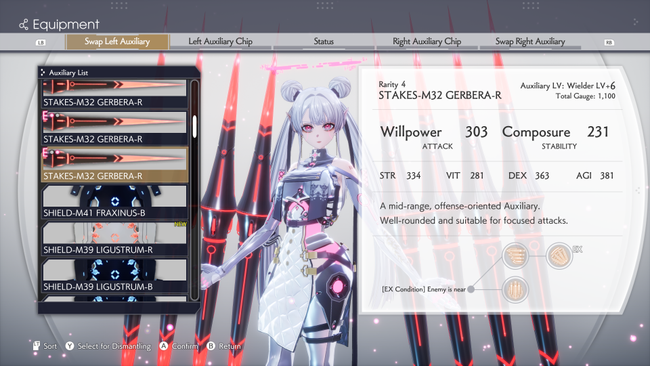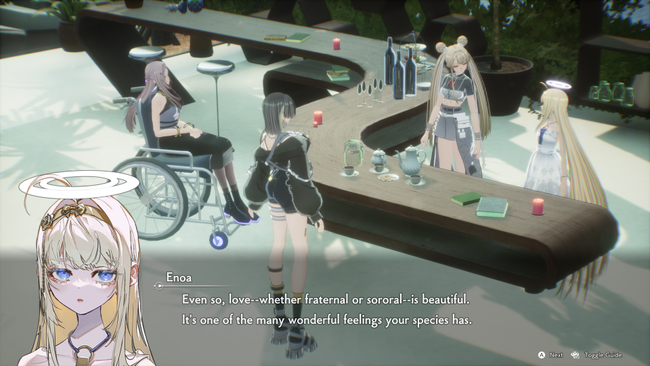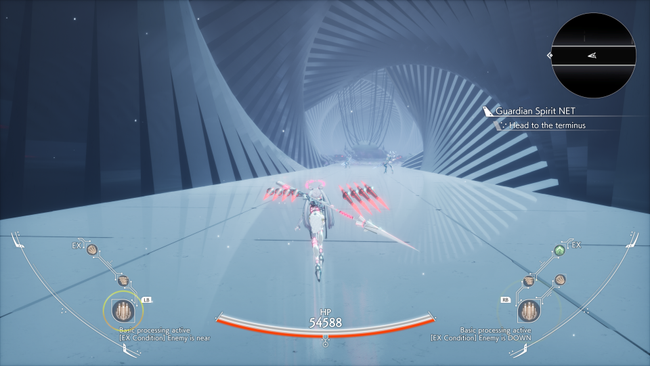
Crymachina Review
When Crymachina was originally announced by FuRyu and NIS America earlier this year, my mind immediately recalled 2019's Crystar, due to its similar name, similar visual aesthetic, and shared Japanese publisher. It wasn't very clear, at the time, if Crymachina was *actually* related to Crystar in any meaningful way, or if the evident similarities were purely superficial.
Despite not having played Crystar back when it was released, I was still curious enough to check out Crymachina. In fact, I decided to play Crystar beforehand as a sort of preparation, so I could more readily make comparisons between the two titles. Put briefly, I actually found Crystar to be mostly dreadful, with tedious gameplay & sluggish narrative, largely in agreement with Lucas' 5/10 review written at the time. "What have I gotten myself into", I thought.
To answer any immediate curiosity, Crymachina is definitely and intentionally a follow-up to Crystar, but only thematically and in some supporting gameplay components. There are no shared characters or world, and even the direct combat gameplay is quite different, so genuinely there really is no real reason to play Crystar first if you haven't already. It's probably worth noting that the two games are developed by different teams, with Crystar developed by Gemdrops and Crymachina developed by Aquria.
Most importantly, though, Crymachina is a considerably better game of the two.

The opening moments of Crymachina begin in a hospital of sorts, showing a teenage girl Leben on what would be her deathbed, succumbing to a deadly disease ravaging the world. 2000 years later, Leben unexpectedly wakes up in a new synthetic body in space, meeting a mysterious girl named Enoa. Humanity is all but extinct now, and Enoa is supposedly working to revive the world, but there's quite a bit more happening behind the scenes.
Crymachina's combat gameplay is quite a bit different from Crystar, and if I'm being honest, somewhat unique among the action RPG genre as a whole, at least in some aspects. It's very fast, quite fluid, and takes a little bit of getting used to. You have your light attack and your heavy attack that launches the enemy, which are pretty standard fare, but you also have two 'auxiliary' weapons that can be used at any time, working on a cooldown system. These weapons aren't the ones Leben is wielding in her hands, but rather the weapons that float above each of her shoulders, almost like wings.
The auxiliary weapon system is actually one of the more elaborate gameplay systems in Crymachina. There are several different auxiliary weapons types to choose from, including buzzsaws, spears, and shields (all of which float above your shoulders).
This is where it gets a little bit tricky, so bear with me for a moment. Each auxiliary weapon has two explicit modes of operation, which can vary depending on the weapon. The easiest example of this would be Leben's starting auxiliary weapons, which behave differently depending on her distance from her targeted foe. From far away, they are launched at the enemy like missiles. At close-range, the same weapon will thrust like spears. There are other behavior toggles besides target range, too, such as if an enemy is 'Weak' or not, or based on Leben's HP.

But these behaviors are not set in stone. You, the player, can adjust what auxiliary weapons do in each use case. You can also bolster these weapons with various passive bonuses, like higher critical chance, added HP regeneration, status ailments, or the like.
My point is, for those interested in character-building or combat layout, setting up your auxiliary weapons is where you will find most of that flexibility.
Crymachina's battle system also allows you to go into a sort-of third-person shooter mode, which at times feels more of a novelty than actually useful, but there are moments when it is effective, both in boss encounters and trash mob battles.
There are three total playable characters in Crymachina, with Mikoto and Ami joining Leben at different parts of the story. While the gameplay mechanics broadly work the same among the three, each has a different weapon and attack speed, which changes battle pacing up just a hair. Ami wields a broadaxe, and she generally battles a little slower than the other two. Leben wields lances and is basically the speedster, while Mikoto works somewhere in the middle as a swordswoman.
Not only is Crymachina's combat much more interesting than Crystar's, but its characters and narrative are too. From a pure front-to-back plotline perspective, there are some interesting narrative twists that take place that alter your perception of events. Let's just say for now, somewhat cryptically, that things are not always how they may initially appear.

While there are some well-worn sci-fi tropes and themes that you may expect based on the general premise, such as defining humanity, or synthetic lifeforms learning what it means to have emotion, or what it means to be alive, I found Crymachina's narrative surprisingly compelling in places. Themes of love and its meaning also permeate throughout the narrative, and while it may not all come together quite as well as I hoped (and sometimes is heavy on the jargon), it still was at times surprisingly effective, and certainly better than anything Crystar had on offer.
There are also numerous dialogue scenes that take place between the main characters when you are back at base. These conversations range from short amusing banter to some thoughtful discussions about the aforementioned narrative themes. While the main cast sometimes can lean a little too hard into their overplayed personality gimmicks, in the end, I came away endeared to these characters, and I was even moved at times throughout the story.
As I see it, Crymachina has two significant gameplay weaknesses. One, level design is almost non-existent. Practically every stage in the game is a linear path, a small battlefield with 3-5 enemies, another linear path, and then a boss, with only a few scant exceptions. It's perhaps not really any worse than Crystar's tedious labyrinthian paths, but it's still a bit disappointing there's nothing to latch onto here in terms of exploration or dungeon design of any sort. Luckily, combat itself is dynamic enough to remain entertaining, but playing through the levels can get old pretty quickly. All the separate areas in the game look visually similar to each other, too, so not even visual variety is in play. Enemy variety is also lacking.

The second weakness compounds the first, in that the player is seemingly expected to play each of these levels more than once, in order to be both properly leveled and equipped for upcoming challenges. Sure, you don't *have* to play levels more than once, but note that each level boss has three equipment drops, which can only be obtained upon repeat victories (something borrowed from Crystar, actually). Plus, you'll find yourself under-leveled otherwise, especially as you reach the back half of the game. Each level can be beaten in 2-5 minutes, so it's not a drastic commitment to replay a level here and there, but it still wore on me over time.
Crymachina also borrows the level-code mechanic that, I believe, was introduced in Monark - another FuRyu title. Throughout the course of the game, you can find codes that unlock other mini-stages with more battles and loot, although they pretty much appear like any other stage in the game. I can't be certain, but I think there are more than 100 of these sorts of stages that you can unlock with various codes and code-patterns. I didn't bother with these too much, and I'm not sure why FuRyu thinks this is an interesting gameplay component; please stop doing it.
Crymachina is not a very long title as far as RPGs go. You can clear the main story in about 15 hours, and complete all significant additional content in about 20. To be honest, I feel like this length was perfectly suited for the content of the game, both narratively and structurally. I could easily see how the game could have felt drawn out had it aimed for a longer run-time.
Despite the narrative not fully coming together in the end, as well as some repetitive gameplay structure, Crymachina manages to be a compelling RPG. It's possibly my favorite FuRyu title to date, and certainly one of the more interesting ones. Regardless of its uneven nature and short duration, I think it may leave a lasting impression on me - at least a little bit.